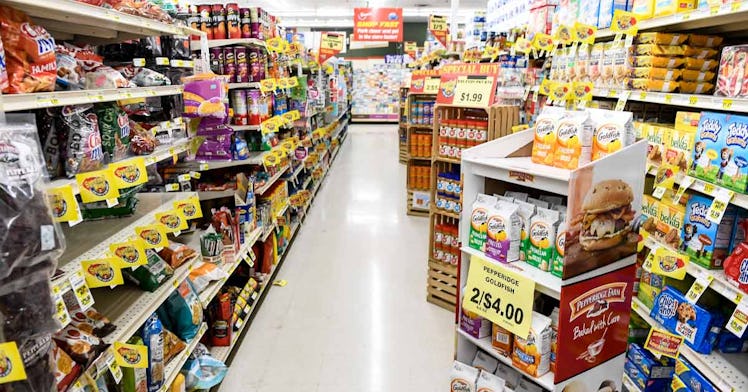This Is How Expensive Groceries Will Get in 2021
Here's what to expect for the rest of 2021, per the USDA.

It is no secret: basically everything, from home-building costs to bacon to gasoline to cars and computer chips to bleach to hand sanitizer — has become more expensive between 2020 and 2021.
A global pandemic, followed by product shortages, supply chain issues, and more, has led to broad increases in the Consumer Price Index (a measure of economy-wide inflation). In turn, the cost of just about everything has ticked up. But what matters is not only how expensive things are now, but also how much more expensive they will become over time.
At no place do consumers feel this more keenly than in the grocery store. According the USDA, food-at-home prices increased 3.5 percent in 2020. The truth is that groceries are more expensive than they were a year ago, and consumers are feeling that prices have increased the most. And now, the USDA has some decent estimates on just how much they expect foods to grow in cost.
Here’s How Much the Cost of Groceries Will Increase in 2021
According to the USDA, the costs of groceries (AKA food-at-home prices) should increase somewhere between 1.5 to 2.5 percent this year, so plan on shelling out more cash at the register when you’re checking out with your eggs, fresh fruits, and cereal.
On a granular level, some foods will get more expensive than others. The USDA estimates that the price of beef and veal will rise by another 1 to 2 percentage points in 2021, pork between 2 to 3 percent, other meats, 1 to 2 percent.
Poultry should increase in cost by .5 to 1.5 percent this year, and fresh fruits, somehow saved from inflation in 2020, will rise from 3.5 to 4.5 percent in 2021. Eggs will also increase in cost but not as much, only 1 percent at most, and dairy prices .5 to 1.5 percent. Cereal and baking products will also increase between 1 to 2 percent.
The short of it? Everyone’s grocery bill will become a bit more expensive.
This article was originally published on